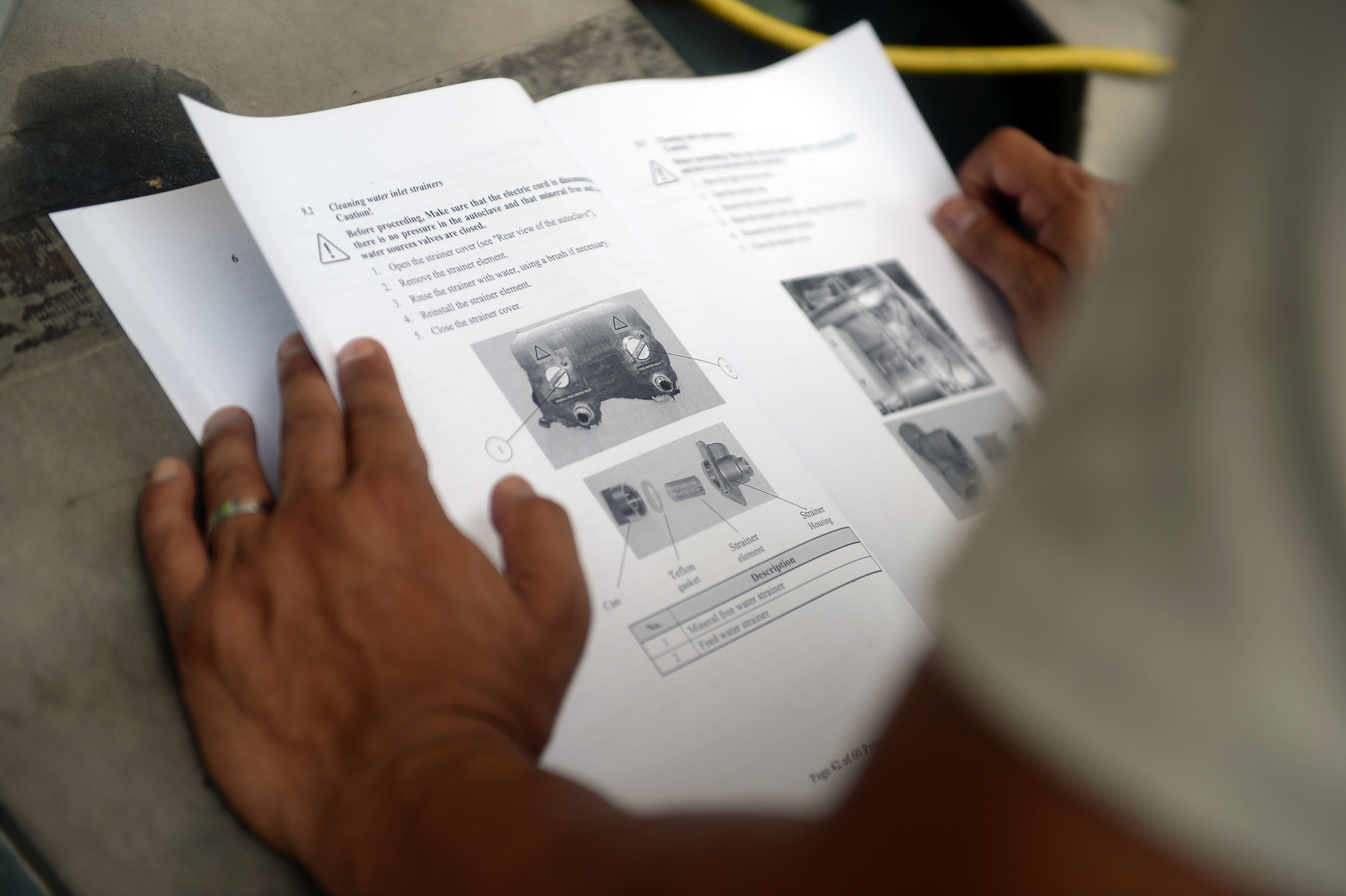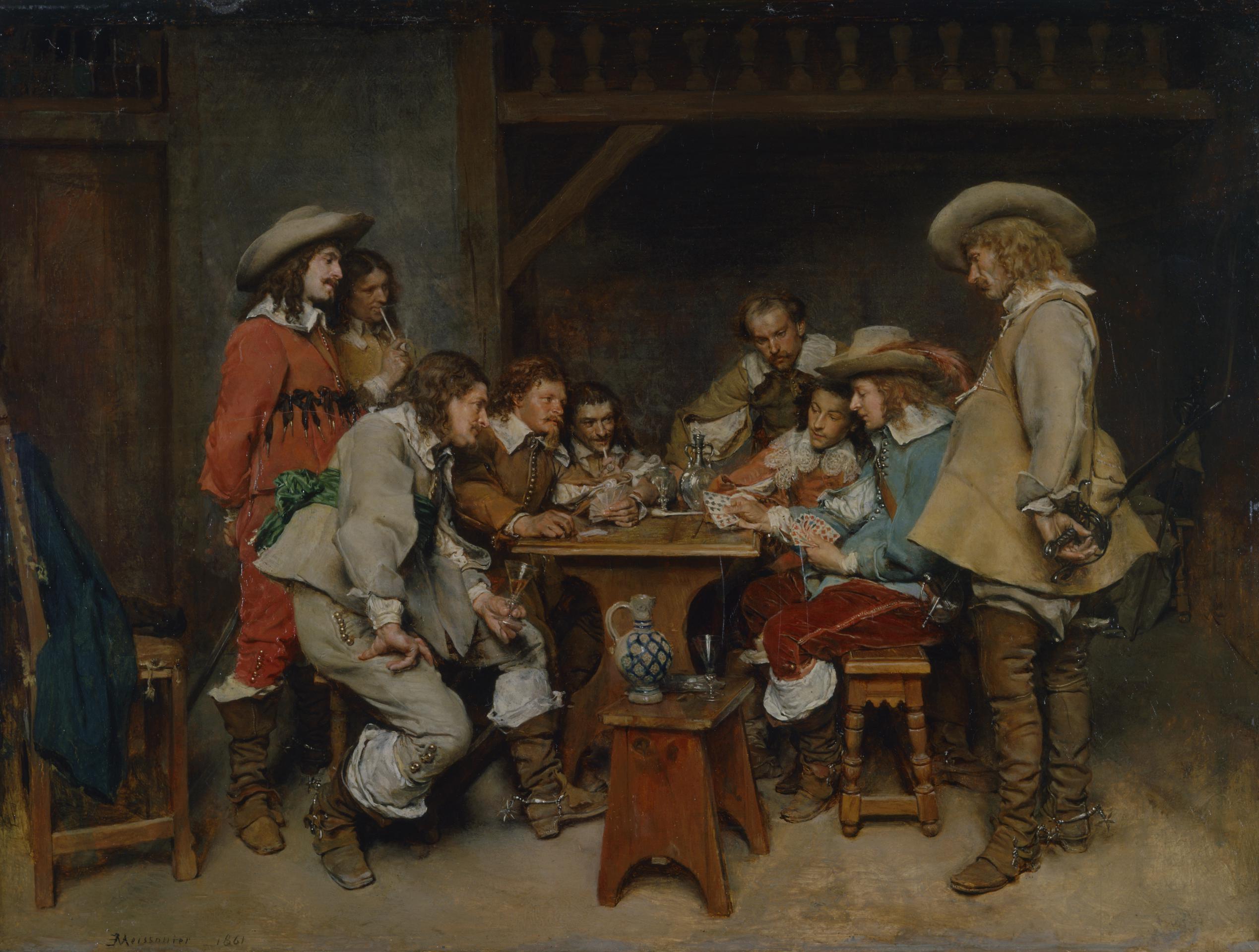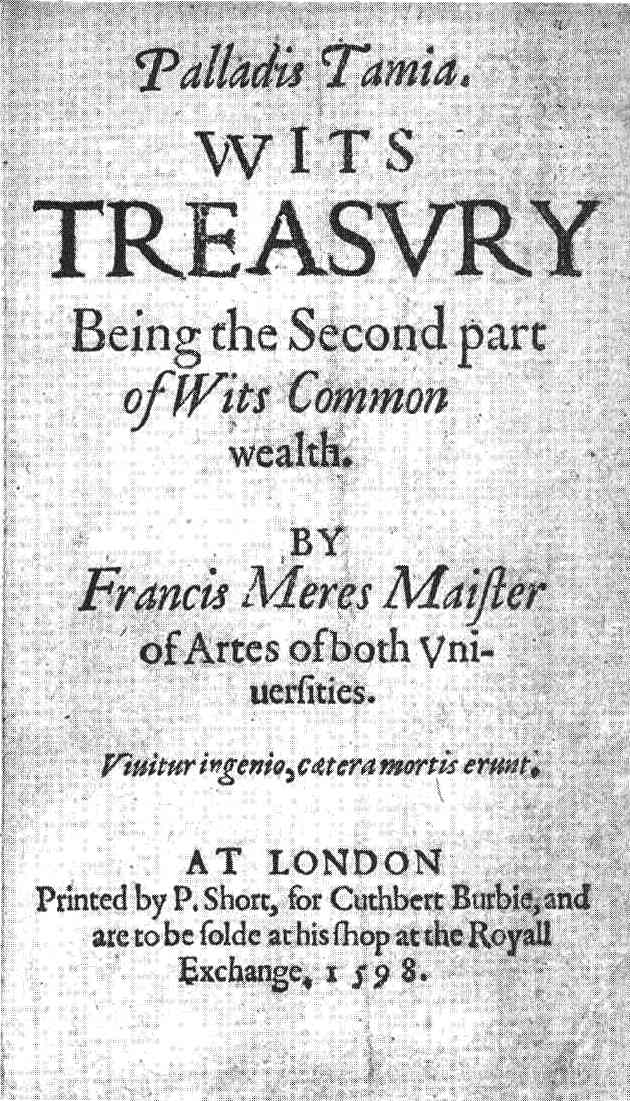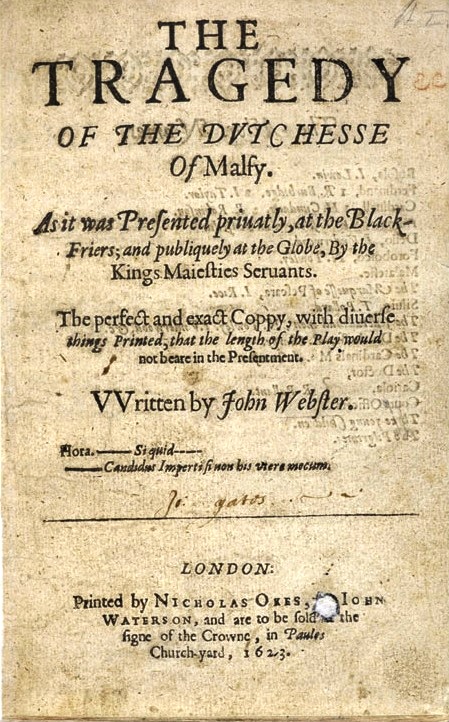|
John Cotgrave
John Cotgrave (1611 - ?) was an English anthologist whose works included ''Wit's Interpreter'', notable for containing the earliest detailed descriptions of card games in English. at parlettgames.uk. Retrieved 14 December 2021. Works The following works by John Cotgrave are recorded: * ''The Covrt Mercurie'' (1644). Journal. London: Tho. Forrest. * ''Le Mercure Anglois'' (1644–1648). Journal. London: Robert White (in French). * ''The English treasury of wit and language'' (1655) London: Humphrey Moseley. * ''Wits interpreter, the English Parnassvs'', 1st edn. (1655) London: N. Brooke. * ''The Muses Mistresse, or A Store-House of Rich Fancies'' (1660), London. * ''Wits interpreter, the English Parnassvs'', 2nd edn. (1662) London: N. Brook. * ''Wits interpreter, the English Parnassvs'', 3rd edn. (1671) London: N. Brook. |
Vademecum
A handbook is a type of reference work, or other collection of instructions, that is intended to provide ready reference. The term originally applied to a small or portable book containing information useful for its owner, but the ''Oxford English Dictionary'' defines the current sense as "any book ... giving information such as facts on a particular subject, guidance in some art or occupation, instructions for operating a machine, or information for tourists." accessed 23 March 2017. A handbook is sometimes referred to as a '''' ( |
Ombre
Ombre (, pronounced "omber") or l'Hombre is a fast-moving seventeenth-century trick-taking card game for three players and "the most successful card game ever invented." Its history began in Spain around the end of the 16th century as a four-person game. It is one of the earliest card games known in Europe and by far the most classic game of its type, directly ancestral to Euchre, Boston and Solo Whist. Despite its difficult rules, complicated point score and strange foreign terms, it swept Europe in the last quarter of the 17th century, becoming ''Lomber'' in Germany, ''Lumbur'' in Austria and ''Ombre'' (originally pronounced 'umber') in England, occupying a position of prestige similar to contract bridge today. Ombre eventually developed into a whole family of related games such as the four-hand Quadrille, three-hand Tritrille, five-hand Quintille and six-hand Sextille, as well as German Solo, Austrian Préférence and Swedish Vira, itself "one of the most complex card games e ... [...More Info...] [...Related Items...] OR: [Wikipedia] [Google] [Baidu] |
Piquet
Piquet (; ) is an early 16th-century plain-trick card game for two players that became France's national game. David Parlett calls it a "classic game of relatively great antiquity... still one of the most skill-rewarding card games for two" but one which is now only played by "aficionados and connoisseurs." History Piquet is one of the oldest card games still being played. It is first mentioned, as ''Le Cent'', in a written reference dating to 1535, in ''Gargantua and Pantagruel'' by Rabelais. Although legend attributes the game's creation to Stephen de Vignolles, also known as La Hire, a knight in the service of Charles VII during the Hundred Years' War, it may possibly have come into France from Spain because the words "''pique''" and "''repique''", the main features of the game, are of Spanish origin. The earliest clear mention of the game – leaving aside various predecessors – is by the Spaniard, Jacques Perrache, in 1585 who refers to two unusual games, "premieres, & pi ... [...More Info...] [...Related Items...] OR: [Wikipedia] [Google] [Baidu] |
Cribbidge
Cribbage, or crib, is a card game, traditionally for two players, that involves playing and grouping cards in combinations which gain points. It can be adapted for three or four players. Cribbage has several distinctive features: the cribbage board used for score-keeping, the eponymous ''crib'', ''box'', or ''kitty'' (in parts of Canada)—a separate hand counting for the dealer—two distinct scoring stages (the play and the show) and a unique scoring system including points for groups of cards that total fifteen. It has been characterized as "Britain's national card game" and the only one legally playable on licensed premises (pubs and clubs) without requiring local authority permission. The game has relatively few rules yet yields endless subtleties during play, which accounts for its ongoing appeal and popularity. Tactical play varies, depending on which cards one's opponent has played, how many cards in the remaining pack will help the hand one holds, and what one's pos ... [...More Info...] [...Related Items...] OR: [Wikipedia] [Google] [Baidu] |
Chess
Chess is a board game for two players, called White and Black, each controlling an army of chess pieces in their color, with the objective to checkmate the opponent's king. It is sometimes called international chess or Western chess to distinguish it from related games, such as xiangqi (Chinese chess) and shogi (Japanese chess). The recorded history of chess goes back at least to the emergence of a similar game, chaturanga, in seventh-century India. The rules of chess as we know them today emerged in Europe at the end of the 15th century, with standardization and universal acceptance by the end of the 19th century. Today, chess is one of the world's most popular games, played by millions of people worldwide. Chess is an abstract strategy game that involves no hidden information and no use of dice or cards. It is played on a chessboard with 64 squares arranged in an eight-by-eight grid. At the start, each player controls sixteen pieces: one king, one queen, two rooks, t ... [...More Info...] [...Related Items...] OR: [Wikipedia] [Google] [Baidu] |
Palladis Tamia
''Palladis Tamia: Wits Treasury; Being the Second Part of Wits Commonwealth'' is a 1598 book written by the minister Francis Meres. It is important in English literary history as the first critical account of the poems and early plays of William Shakespeare. It was listed in the Stationers Register 7 September 1598. ''Palladis Tamia'' contains moral and critical reflections borrowed from various sources, and included sections on books, on philosophy, on music and painting, as well as the famous "Comparative Discourse of our English poets with the Greeke, Latin, and Italian poets" that enumerates the English poets from Geoffrey Chaucer to Meres' own day, and compares each with a classical author. While Meres is considerably indebted to George Puttenham's earlier ''The Arte of English Poesie'' (1589), the section extends the catalogue of poets and contains many first notices of Meres's contemporaries. The title refers to Greek Πᾰλλᾰ́δος (''Pallados'', "of Pallas," a ... [...More Info...] [...Related Items...] OR: [Wikipedia] [Google] [Baidu] |
Wit's Treasury
''Palladis Tamia: Wits Treasury; Being the Second Part of Wits Commonwealth'' is a 1598 book written by the minister Francis Meres. It is important in English literary history as the first critical account of the poems and early plays of William Shakespeare. It was listed in the Stationers Register 7 September 1598. ''Palladis Tamia'' contains moral and critical reflections borrowed from various sources, and included sections on books, on philosophy, on music and painting, as well as the famous "Comparative Discourse of our English poets with the Greeke, Latin, and Italian poets" that enumerates the English poets from Geoffrey Chaucer to Meres' own day, and compares each with a classical author. While Meres is considerably indebted to George Puttenham's earlier ''The Arte of English Poesie'' (1589), the section extends the catalogue of poets and contains many first notices of Meres's contemporaries. The title refers to Greek Πᾰλλᾰ́δος (''Pallados'', "of Pallas," a ... [...More Info...] [...Related Items...] OR: [Wikipedia] [Google] [Baidu] |
Belvedere (book)
Belvedere (from Italian, meaning "beautiful sight") may refer to: Places Australia *Belvedere, Queensland, a locality in the Cassowary Coast Region Africa *Belvedere (Casablanca), a neighborhood in Casablanca, Morocco *Belvedere, Harare, Zimbabwe, a suburb Europe * Belvédère, Alpes-Maritimes, France, a commune * Belvedere Giacomo Puccini, Torre del Lago Puccini (LU), Toscana. This belvedere consists of a small plaza on Lago Massaciuccoli, in front of the villa of composer Giacomo Puccini and bordering the grounds of the annual Puccini Opera Festival. * Mount Belvedere, northern Italy * Belvedere, London, United Kingdom, a suburban area and electoral ward, part of the borough of Bexley * Belvedere Glacier, in the Italian Alps * Belvedere, Suvereto, Tuscany, Italy * Belvedur, Slovenia North America * Belvedere, California, a city ** Belvedere Lagoon, an artificial lagoon ** Belvedere Park, California * Belvedere, a neighborhood, now part of East Los Angeles, Californi ... [...More Info...] [...Related Items...] OR: [Wikipedia] [Google] [Baidu] |
John Webster
John Webster (c. 1580 – c. 1632) was an English Jacobean dramatist best known for his tragedies '' The White Devil'' and ''The Duchess of Malfi'', which are often seen as masterpieces of the early 17th-century English stage. His life and career overlapped with Shakespeare's. Biography Webster's life is obscure and the dates of his birth and death are not known. His father, a carriage maker also named John Webster, married a blacksmith's daughter named Elizabeth Coates on 4 November 1577 and it is likely that Webster was born not long after, in or near London. The family lived in St Sepulchre's parish. His father John and uncle Edward were Freemen of the Merchant Taylors' Company and Webster attended Merchant Taylors' School in Suffolk Lane, London. On 1 August 1598, "John Webster, lately of the New Inn" was admitted to the Middle Temple, one of the Inns of Court; in view of the legal interests evident in his dramatic work, this may be the playwright. Webster married 17-year-o ... [...More Info...] [...Related Items...] OR: [Wikipedia] [Google] [Baidu] |
The Duchess Of Malfi
''The Duchess of Malfi'' (originally published as ''The Tragedy of the Dutchesse of Malfy'') is a Jacobean revenge tragedy written by English dramatist John Webster in 1612–1613. It was first performed privately at the Blackfriars Theatre, then later to a larger audience at The Globe, in 1613–1614. Published in 1623, the play is loosely based on events that occurred between 1508 and 1513 surrounding Giovanna d'Aragona, Duchess of Amalfi (d. 1511), whose father, Enrico d'Aragona, Marquis of Gerace, was an illegitimate son of Ferdinand I of Naples. As in the play, she secretly married Antonio Beccadelli di Bologna after the death of her first husband Alfonso I Piccolomini, Duke of Amalfi. The play begins as a love story, when the Duchess marries beneath her class, and ends as a nightmarish tragedy as her two brothers undertake their revenge, destroying themselves in the process. Jacobean drama continued the trend of stage violence and horror set by Elizabethan tragedy, u ... [...More Info...] [...Related Items...] OR: [Wikipedia] [Google] [Baidu] |
The White Devil
''The White Devil'' (full original title: ''The White Divel; or, The Tragedy of Paulo Giordano Ursini, Duke of Brachiano. With The Life and Death of Vittoria Corombona the famous Venetian Curtizan'') is a tragedy by English playwright John Webster (c. 1580 – c. 1634). According to Webster's own preface to the 1612 Quarto Edition"To the Reader" the play's first performance in that year was a notorious failure; he complained that the play was acted in the dead of winter before an unreceptive audience. The play's complexity, sophistication, and satire made it a poor fit with the repertory of Queen Anne's Men at the Red Bull Theatre, where it was first performed. It was successfully revived in 1630 by Queen Henrietta's Men at the Cockpit Theatre and published again in 1631. Background The story is loosely based on an event in Italy thirty years prior to the play's composition: the murder of Vittoria Accoramboni in Padua on 22 December 1585. Webster's dramatisation of this event ... [...More Info...] [...Related Items...] OR: [Wikipedia] [Google] [Baidu] |






